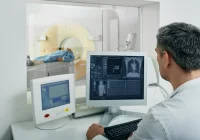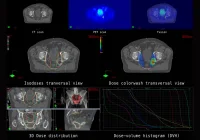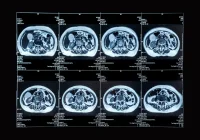Magnetic resonance imaging has become central to prostate cancer diagnosis and risk stratification, yet variability in image quality can undermine clinical pathways. A multi-institutional analysis assessed how prostate imaging quality, graded with the updated Prostate Imaging Quality Score version 2 (PI-QUAL v2), affects the diagnostic performance of biparametric MRI (bpMRI) in detecting clinically significant prostate cancer. The investigation also examined which technical parameters most strongly influence image quality on T2-weighted and diffusion-weighted sequences. The findings highlight that suboptimal acquisition compromises sensitivity and that specific technical choices—particularly in-plane resolution on T2-weighted imaging and the number of b values for diffusion—are pivotal to achieving reliable results. These insights support efforts to standardise protocols and reinforce quality control before decisions are made on biopsy or surveillance.
Multi-institutional Cohort and Quality Distribution
The analysis included 112 men referred for second-opinion reads after bpMRI performed at 69 external facilities between January 2020 and November 2021. Images were interpreted by genitourinary radiologists using PI-RADS v2.1 and biopsy outcomes were used as the reference standard. Of the 112 examinations, 47 were not eligible for PI-QUAL v2 scoring because essential technical requirements were not met. Among those that could be scored, 30 were graded PI-QUAL 1 (inadequate), 17 PI-QUAL 2 (acceptable) and 18 PI-QUAL 3 (optimal), underscoring wide variation in acquisition quality across contributing centres.
Must Read: Abbreviated MRI in Prostate Cancer Screening
Failures of essential criteria occurred more often on diffusion-weighted imaging than on T2-weighted imaging. Sixteen T2-weighted series and 41 diffusion-weighted series did not meet the prerequisites, reflecting recurrent issues with diffusion protocols. In many inadequate diffusion sets, the highest b value was not available or the number of b values was insufficient for robust apparent diffusion coefficient mapping, indicating protocol gaps that directly influence lesion conspicuity and contrast.
Diagnostic Performance Shifts with Image Quality
Diagnostic yields varied markedly by image quality category. Sensitivity for detecting clinically significant prostate cancer was lower when image quality was inadequate or not applicable (PI-QUAL ≤ 1) compared with acceptable to optimal scans (PI-QUAL 2–3). The inadequate group achieved 74.3% sensitivity, whereas acceptable to optimal scans reached 100%, a statistically significant difference. Negative predictive value was numerically higher for acceptable to optimal scans, although the difference did not reach significance. Specificity and positive predictive value were similar across quality strata, suggesting that image quality exerts its strongest influence on the ability to rule in or rule out significant disease rather than on false positives. These performance patterns emphasise that sensitivity, and to a lesser extent reassurance from negative examinations, deteriorate when core acquisition standards are not met.
These results carry practical implications for MRI-directed diagnostic pathways. When image quality is inadequate, there is a greater risk of missed clinically significant cancer, which can translate into inappropriate reassurance and delayed definitive management. The authors note that decisions to omit biopsy in men with low PI-RADS categories should factor in the quality of the underlying images, and that repeating scans may be warranted when acquisition falls short of the essential criteria.
Technical Parameters that Matter Most
The analysis linked specific technical settings to quality criteria within PI-QUAL v2. For T2-weighted imaging, meeting the recommended in-plane dimension threshold was associated with adequate signal-to-noise ratio, indicating that finer in-plane resolution contributes to clearer depiction of prostatic anatomy. The absence of an interslice gap showed a trend toward better delineation of relevant structures, reinforcing the role of contiguous acquisitions in preserving anatomical detail. Although slice thickness and field-of-view are foundational elements, their fulfilment alone did not guarantee better signal or structure delineation in this cohort, pointing to the multifactorial nature of image optimisation.
For diffusion-weighted imaging, having at least three b values, including low, intermediate and high, was associated with adequate contrast and signal-to-noise on high b images. Protocols that lacked a high b value or did not include sufficient b values were more likely to yield inadequate contrast or suboptimal apparent diffusion coefficient maps, diminishing lesion visibility. The analysis observed that diffusion sequences were the most frequent source of essential-criteria failures, often due to omission of high b values or reliance on suboptimal b-value schemes, underlining the importance of robust diffusion protocols in bpMRI.
These parameter-specific insights sit within the broader context of PI-QUAL v2, which streamlines assessment by focusing on essential criteria while remaining applicable to bpMRI. However, simplification does not negate the need for disciplined protocol design. The findings suggest that emphasising in-plane resolution on T2-weighted imaging, eliminating interslice gaps where possible and ensuring at least three well-chosen b values for diffusion can collectively promote higher quality and, by extension, more reliable diagnostic performance.
Prostate bpMRI performance is tightly coupled to acquisition quality under PI-QUAL v2. Inadequate or technically non-compliant scans demonstrated lower sensitivity for clinically significant prostate cancer, with diffusion-weighted imaging emerging as a frequent point of failure due to missing or insufficient b values. Associations between finer in-plane resolution on T2-weighted imaging, robust multi-b-value diffusion schemes and improved quality metrics point to actionable levers for radiology teams. Embedding these parameters into local protocols, auditing adherence and repeating substandard scans where necessary can strengthen MRI-directed diagnostic pathways and support safer biopsy decisions in routine practice.
Source: European Journal of Radiology
Image Credit: iStock










